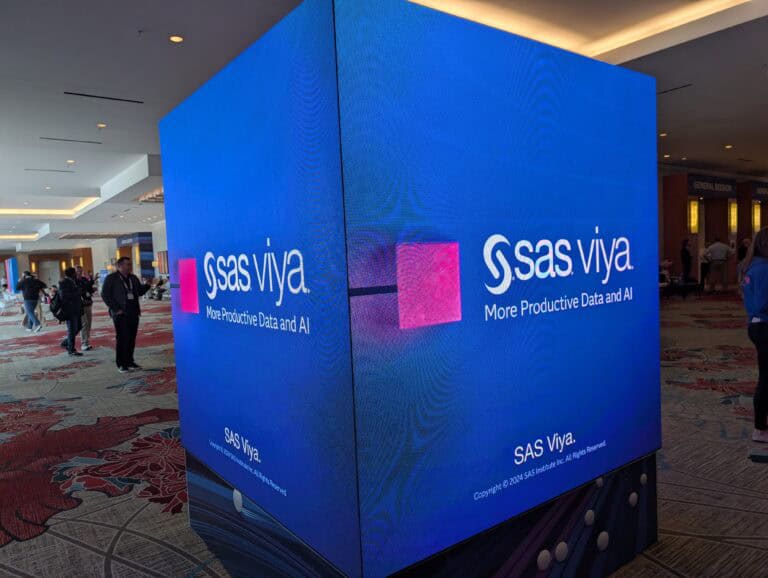With close to fifty years of experience, SAS has guided organizations through the major shifts in analytics. Back in the days, it was about statistical modelling, followed by the rise of big data, and today it is once again redefining the landscape with artificial intelligence. At the core to navigate companies through the newest AI era is the SAS Viya platform. A lot of recent development work is going into the tools Viya Workbench, Data Maker, and Viya Copilot. We spoke with Marinela Profi, Market Strategy Lead for AI & Generative AI at SAS, about these enhancements that promise to break down persistent barriers in data science workflows. This by addressing data availability and quality, infrastructure complexity, and development productivity in a unified, enterprise‑grade environment.
“We have been helping organizations to successfully use data for better business decisions for almost five decades,” Profi says, emphasizing that the company has continuously reinvented itself to make users more productive. As each wave of technology, from predictive models to Hadoop clusters, has come and gone, SAS’ mission has remained constant: to empower users with reliable tools that turn data into insights. Now, in what Profi described as “the most transformative and disruptive technological wave,” generative AI and agentic AI stand poised to accelerate that mission to unprecedented speeds.
Central to SAS’ vision is the recognition that enterprises today struggle with building sophisticated models, as well as securing the data those models require, provisioning the compute resources to run them, and ensuring that teams across the organization can collaborate efficiently. Rather than delivering siloed point solutions, SAS has woven its three new tools into the fabric of its Data and AI platform Viya, creating an experience that moves users naturally from data preparation all the way to deployment.
Bridging data gaps with synthetic data

The first of these offerings, Data Maker, tackles one challenge that is becoming increasingly prominent, according to SAS, which is, obtaining high‑quality training data without compromising privacy and security. In sectors such as healthcare and finance, regulations often make real‑world datasets off‑limits or heavily redacted, creating gaps that slow model development. Data Maker addresses this by generating synthetic datasets that preserve the statistical relationships of the original data while obfuscating identifiable information.
In Data Maker, users point their source tables and let the system detect semantic types, distinguishing dates from primary keys, categories from reference columns, without manual setup. The training runs automatically. When it’s complete, the user gets a dashboard of metrics to assess both privacy protection and fidelity to the real data. With a couple of clicks, teams can then generate synthetic data at any scale, which is downloaded in standard CSV format, allowing it to plug straight into existing analytics and machine-learning frameworks. The new capability also handles time‑series data, preserving temporal patterns that are critical to forecasting and anomaly detection. By removing the bottlenecks of data scarcity and privacy compliance, Data Maker accelerates experimentation and reduces reliance on cumbersome anonymization processes.
Flexible development in the Cloud
Once data is in hand, whether real or synthetic, the next hurdle is providing developers with an environment that can flex with their needs. SAS Workbench offers cloud‑native, on‑demand workspaces where data scientists can write code in SAS, Python, or R, using their preferred interfaces such as Jupyter notebooks, Visual Studio Code, or the SAS Enterprise Guide. Initially hosted on AWS with Azure support planned for release this year, Workbench enables users to configure GPU, memory, and storage resources to match project demands.
As a user, you can scale the number of workbooks or notebooks and select compute and RAM levels based on your requirements. Preloaded sample code for the preferred languages helps teams kick off common tasks without delay. Crucially, Workbench automatically suspends idle environments to help organizations manage cloud costs, striking a balance between agility and governance. This elasticity ensures that data engineers spend less time wrestling with infrastructure, freeing up time for analytical innovation, Profi explains.
Generative AI assistance with Viya Copilot
With data and infrastructure addressed, SAS also turned to other ways to progress towards a more modern data‑science lifecycle. This results in AI‑driven development assistance. Viya Copilot embeds generative AI agents directly into the platform, offering context‑aware code suggestions, automated documentation, and guided pipeline creation across SAS Model Studio and other Viya components. As users build data preparation flows or model pipelines, Copilot can propose the next logical step, drawing on best practice templates and team-specific conventions.
The assistant can annotate existing scripts to improve readability, suggest optimizations to data transformations, or generate boilerplate code for model evaluation and monitoring. Over time, it refines its recommendations by learning from user feedback, tailoring its guidance to each organization’s unique coding style. Yet throughout the experience, Copilot preserves human oversight. “The philosophy of everything we build and release, is keeping the human in the centre,” Profi explained. AI should augment human expertise, according to SAS’ vision. Every suggestion remains optional, ensuring that final decisions and code commits reside firmly in the hands of skilled analysts.
A unified platform for enterprise AI
All these individual capabilities aim to interoperate within Viya as well as possible. Synthetic data sets from Data Maker flow seamlessly into Workbench environments, and the scripts and pipelines developed there automatically benefit from Copilot’s intelligence. Metadata, governance policies, and security controls propagate across the platform, providing IT leaders with end‑to‑end visibility into data lineage, model versioning, and compute utilization. By erasing silos among data preparation, development, and deployment, SAS resolves a perennial pain point in modern analytics toolchains.
Looking ahead, SAS plans to expand its library of pre‑built AI agents, targeting domains such as fraud detection, clinical‑trial analysis, and preventive maintenance. Specialized AI agents, including a data‑mapping assistant that accelerates schema integration tasks, will streamline routine operations. Throughout this evolution, SAS remains committed to trustworthy AI. Every automated recommendation retains human veto power, each model decision is explainable, and all data transformations are fully auditable.
Also read: SAS gives data scientists the steering wheel for the AI (agents) era
